This post may contain affiliate links. If you make a purchase through an affiliate link, I will earn a commission at no extra cost to you. Thanks for your support.
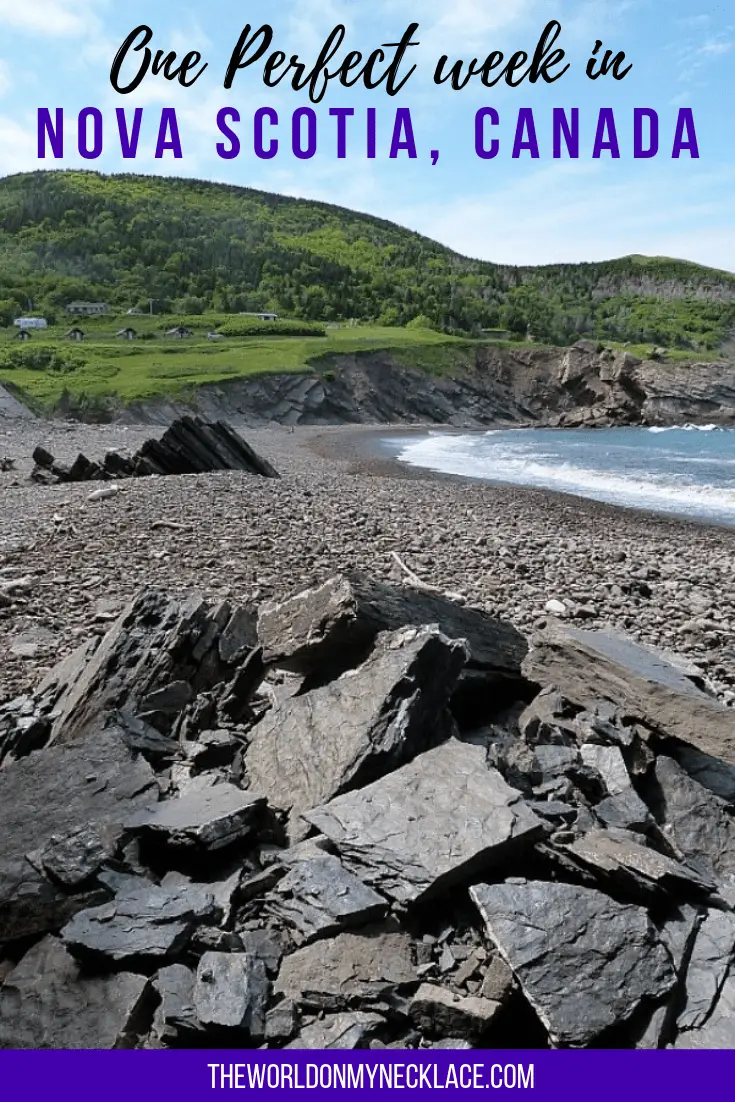
In most cases there seems to be no reason why places in the New World were named after their namesake in the old. I don’t find New York to be anything like York, as far as I know New Zealand is nothing like Zeeland and New South Wales couldn’t be more different than South Wales.
Nova Scotia certainly bucks that trend.

It definitely felt like we were in Scotland with the craggy landscape, soggy weather, Celtic culture in Cape Breton Island and Canadian accents with a slight Scottish lilt.
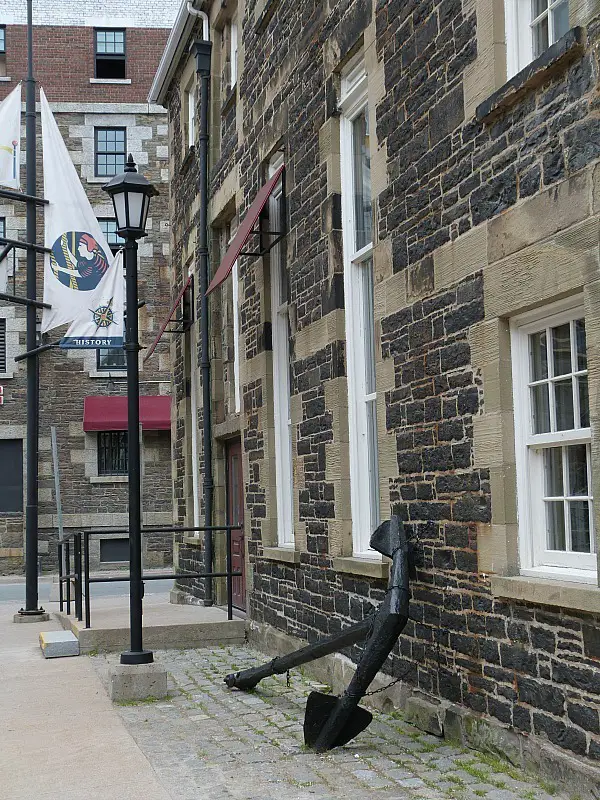
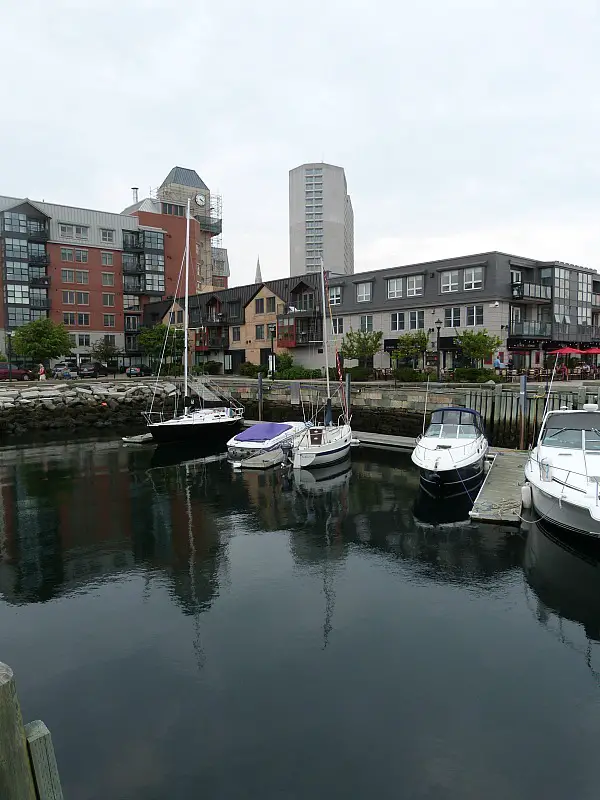
Our first taste of Nova Scotia was its capital, Halifax, a city with a long history of seafaring and marked by tragedy more than once.
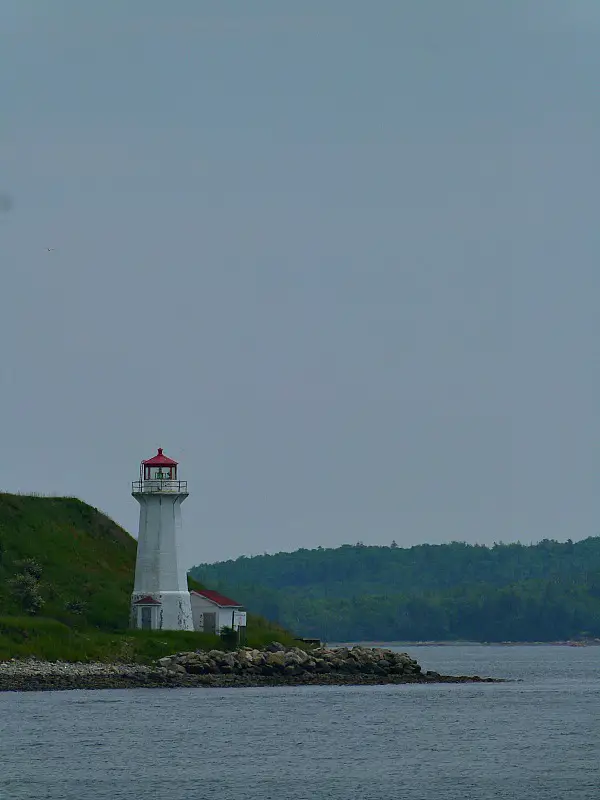
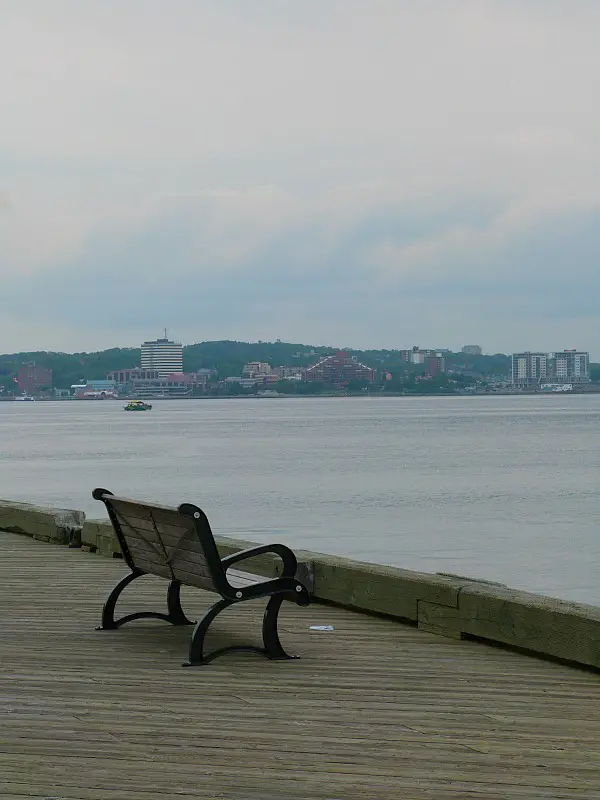
Titanic History in Halifax
Halifax was the closest city to where the ill-fated Titanic went down and where the dead that were recovered from the sea were brought (the survivors were taken to New York).
Of the bodies recovered, only 59 were shipped home for burial by their relatives, 119 were buried at sea due to the recovery ship running out of embalming supplies and the other 150 were buried in Halifax, the largest number of the Titanic dead anywhere in the world.
For as long as I can remember, I have had a morbid fascination with the sinking of the Titanic, so of course we visited the cemetery that held the majority of the Titanic victims buried in Halifax, the Fairview Lawn Cemetery.
There were some interesting graves there including one for the ‘Unknown Child’ who has now been identified as Sidney Goodwin, a 19 month old English boy. Poor Sidney died along with all 8 members of his family that were also on board. There are flowers and toys scattered upon his tragic grave.
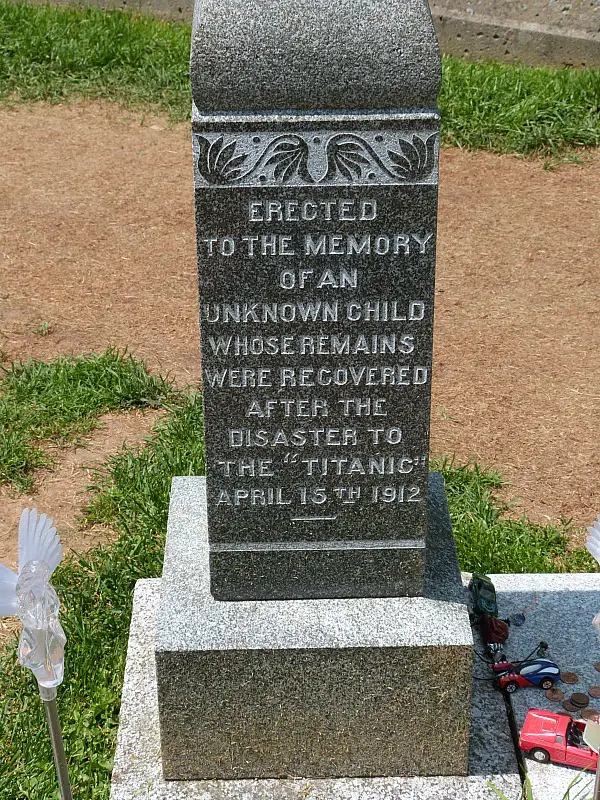
Another grave of interest is for a J Dawson. We had watched a travel show were the presenter also visited the Titanic graves. Apparently a lot of tourists believe that the grave is for Jack Dawson of the movie ‘Titanic’.
Of course Jack is a fictional character and the grave is in fact for a John Dawson.
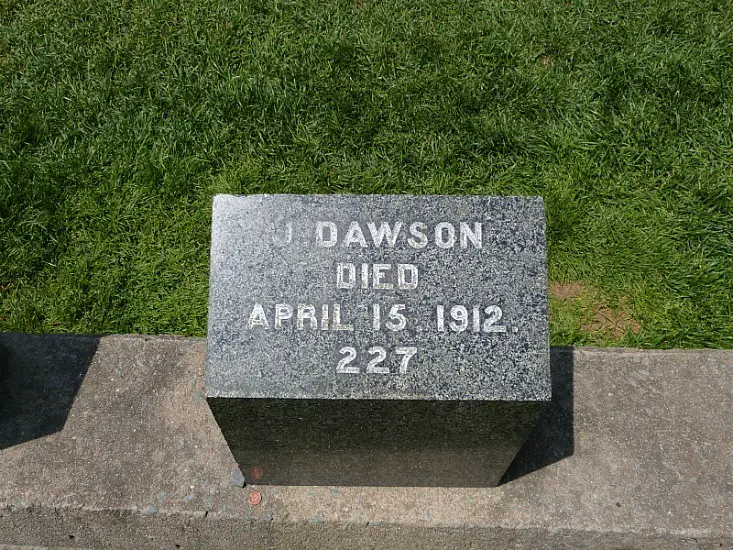
Learning About the Halifax Explosion
There were also a lot of graves for the victims of Halifax’s other famous disaster: The Halifax Explosion.
The Halifax Explosion occurred in 1917 when a munitions ship, the Mont Blanc, collided with another ship in the harbour, caught fire then exploded. The explosion killed over 2000 people and injured another 9000 and it is still the most powerful non-nuclear manmade explosion ever.
It completely devastated the community of Richmond, which was closest to the blast, and nearly all buildings within a half mile radius of the blast were obliterated.
We learnt a lot about the Halifax Explosion and the Titanic sinking at the excellent Maritime Museum of the Atlantic on Halifax’s picturesque Harbour. There was free entry on Tuesday evenings so we took full advantage.
I had noticed a grave that was particularly tragic when we were at Fairview Cemetery. It was of a family, with the three children all dying young in 1888 and the parents in 1917. I wasn’t sure what happened to the children but the parents likely died during the Halifax Explosion.
While looking around the Halifax Explosion exhibit at the museum, I found a gravestone that had been bought by a couple for their three children’s grave, who had all died years before of an epidemic.
He was storing the gravestone at a warehouse until he got the chance to place it where his children were buried. Unfortunately both he and his wife died in the explosion before he got the chance.
No one knew where his children were buried so the stone remained in the warehouse until it was turned into a museum in the 1970’s.
It turned out that this family was the same family of the grave that I had seen in Fairview Cemetery as I had taken a photo of it and matched the names.
So I found out what happened to the children after all.
It was a weird coincidence that I had happened to notice that particular grave, and I’m glad I found out the story behind it.
Visiting Museums in Halifax
The excellent Maritime Museum also housed artifacts and information about numerous other shipwrecks around Halifax over the last 300 years. I could have stayed there for hours (or days) but Trav eventually dragged me away.
Another great museum we visited in Halifax was the Pier 21 Immigration Museum. Pier 21 is where immigrants to Canada, mainly from Europe, landed by ship between 1928 and 1971. Visiting the Pier 21 Museum is one of the best things to do in Halifax.
The main thing on offer at the museum is the stories of people that came through Pier 21 over the years, and their experiences of settling into their new life as a Canadian.
There were some very interesting and heart-warming stories but also some dark chapters in the history of Pier 21.
Immigration was not open for a number of years to people who aren’t white and a ship full of Jewish refugees were turned away from Canada just before the start of World War 2. After being refused entry into the US and Cuba, Canada was their last chance.
They were forced to turn back to land in Belgium and 254 of the 907 on board lost their lives in the Holocaust.
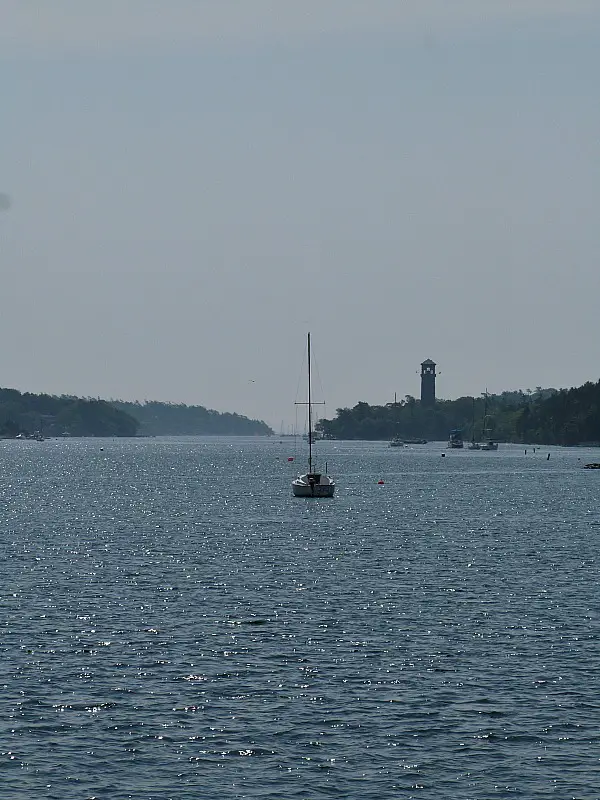
Exploring the Green Side of Halifax
On a lighter note, as well as the museums and the Fairview Cemetery, a big highlight for me was our walk along Northwest Arm, an inlet off Halifax Harbour.
We were lucky to be couch surfing just across the road from this beautiful area of Halifax. There is a discovery trail that starts in a park just off the arm.
The park has a memorial for the Halifax Explosion; part of the Mont Blanc’s anchor that was hurled there, 2.5 miles from the harbour, by the explosion. We then followed the trail along the water and to Deadman’s Island.
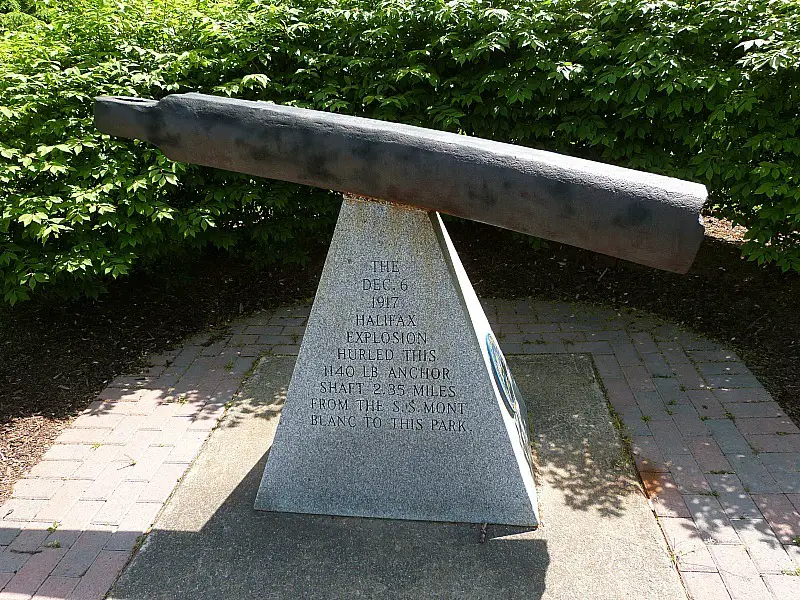 The island was a burial spot for prisoners of war in the Napoleonic wars in the early 19th century. Now it is just a small wooded peninsula; a peaceful and relaxing place to be.
The island was a burial spot for prisoners of war in the Napoleonic wars in the early 19th century. Now it is just a small wooded peninsula; a peaceful and relaxing place to be.
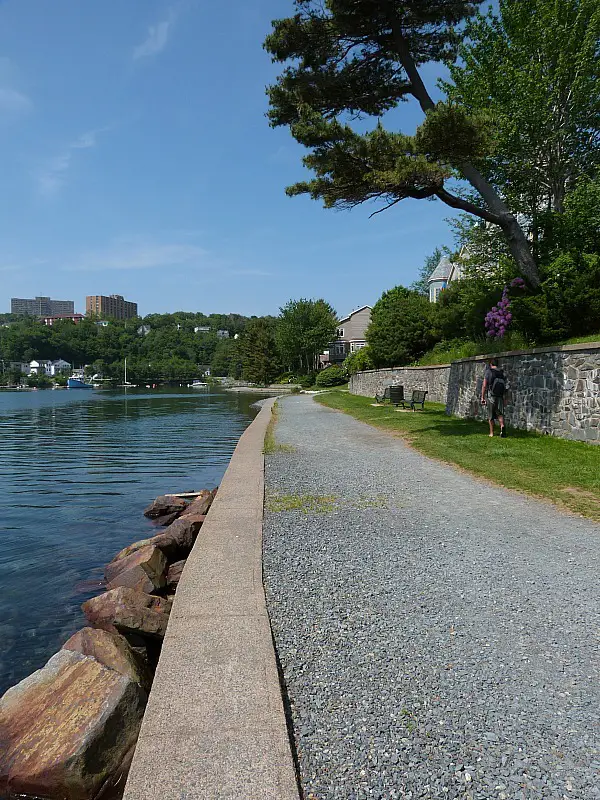
We had lunch overlooking the Arm at the Armview Restaurant, one of the oldest in Halifax. It has been refurbished to look like it did in its prime with 50’s Diner décor. We had pulled pork sandwiches and they were AMAZING.
Definitely recommend this place, their menu was fantastic; it was really difficult to choose what to have and this is coming from a fairly fussy eater (although less so after Latin America).
Roadtripping Cape Breton Island
Thanks to our many flights over the years, we had racked up quite a few air miles between us which allowed us to rent a car for four days from Halifax.
We really wanted to get up to Cape Breton Island and it was expensive and inflexible by bus so we were lucky to be able to do it by car.
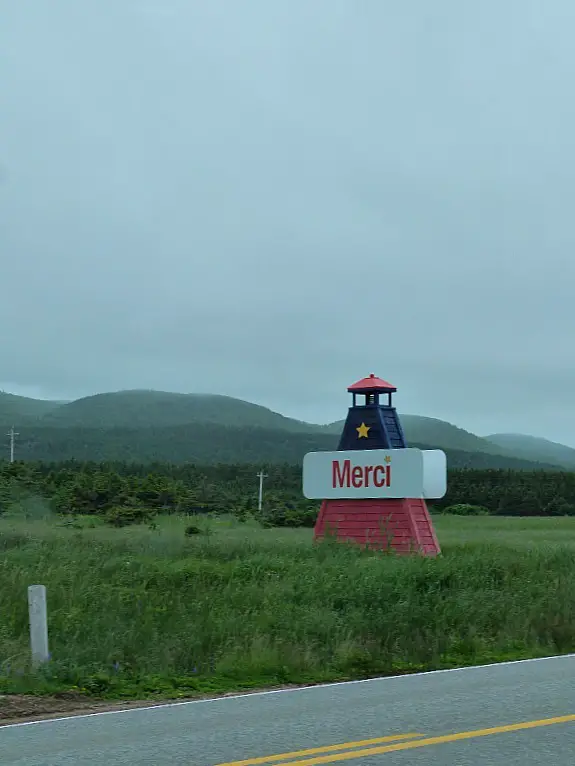
It was quite a drive up to Cheticamp on the famous Cabot Trail, which is rated one of the best drives in the world. Very green and windswept up there. The Cabot Trail winds around the coast, a squiggle amidst the green.
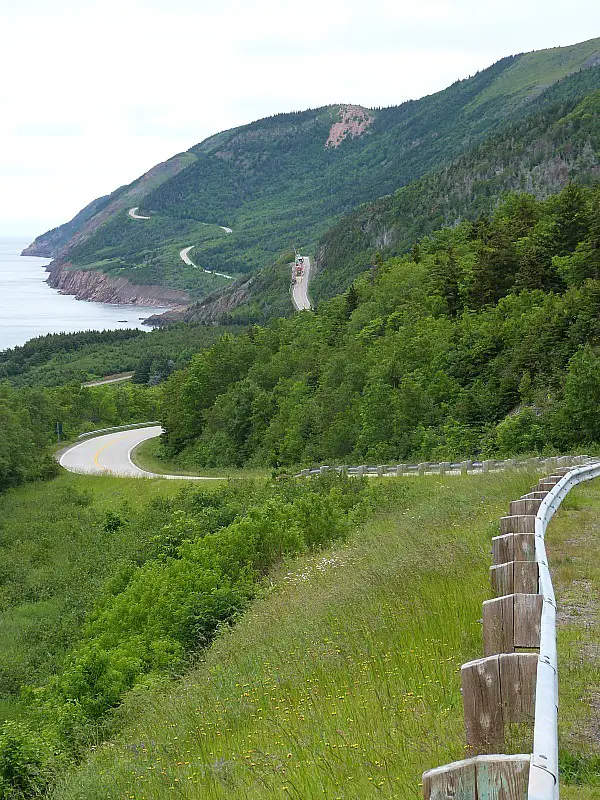
As soon as we passed over the bridge to Cape Breton Island, we noticed the road signs were in celtic as well as English. A large percentage of the population of Cape Breton Island are from Highland Scotland.
They moved due to the clearances in the 18th and 19th Centuries and the potato famine. Music is a large part of that culture and there is a lot of Scottish style folk music performed live throughout the Island.
It was pretty miserable all day but by the time we got to our campsite in the Cape Breton Highlands National Park, it had stopped raining at least.
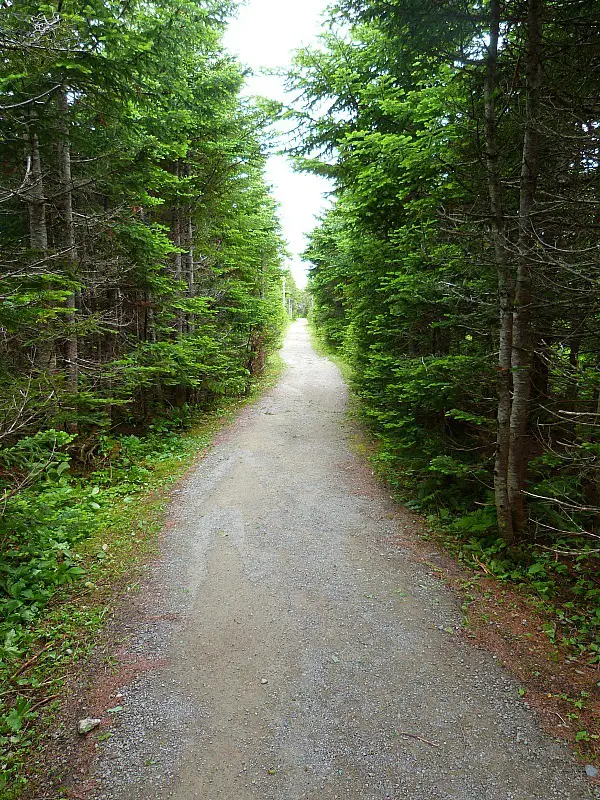

The next day was overcast but thankfully there was no rain. We did a 10km hike, the Skyline Trail, to a ridgeline with sweeping views of the sea and rocky coatline.
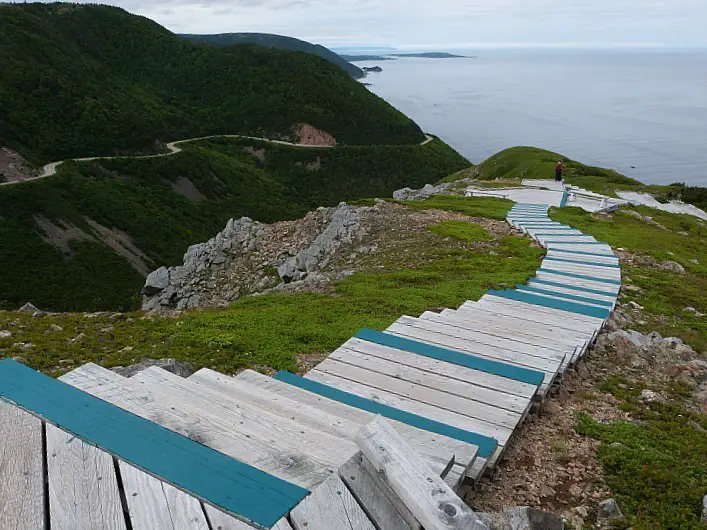
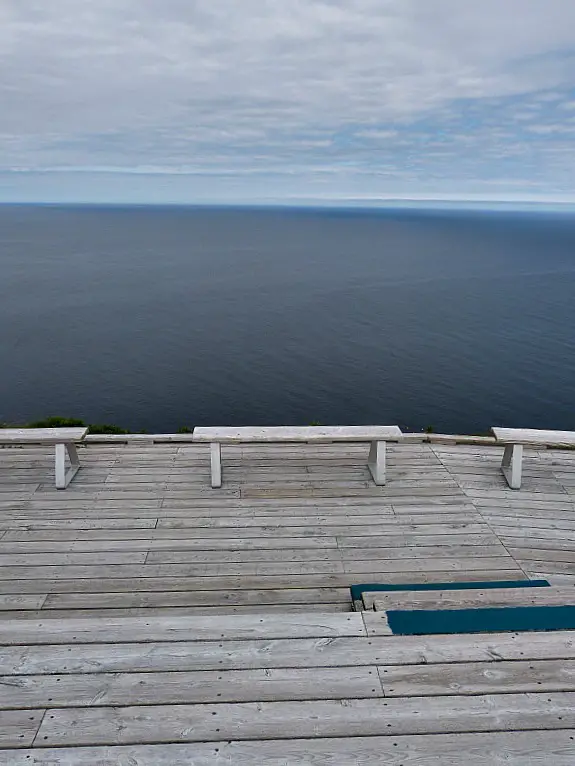
Trav spotted a moose amongst the trees, sitting down for a rest. He wasn’t too fazed by our presence but we didn’t get too close just in case.

Back in the car, we carried on further up the coast past the pale pink, detritus covered beach of Pleasant Bay and up to Meat Cove, where we were finally greeted by the sun.
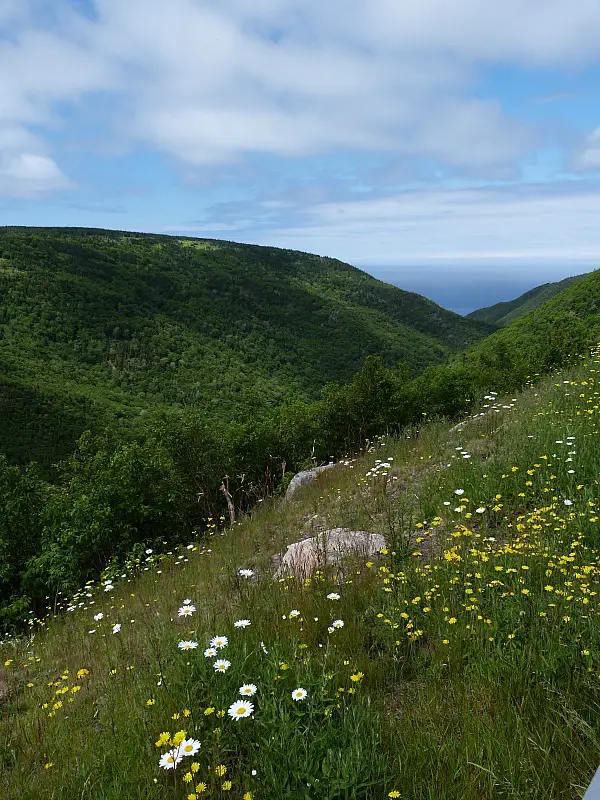
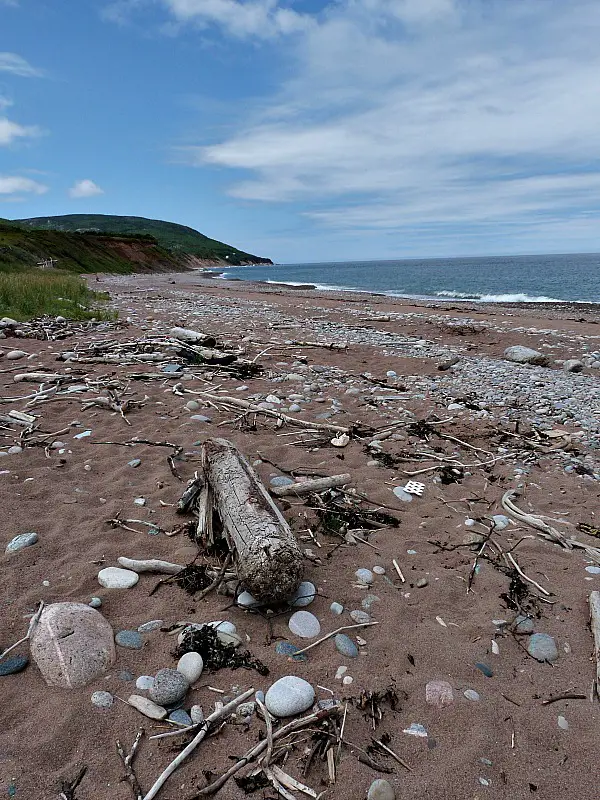
Meat Cove has a beautiful rocky beach with a river running into it and is surrounded by green cliffs covered in purple and pink lupines. There is a waterfall tumbling into the sea further around the rocks from the beach.

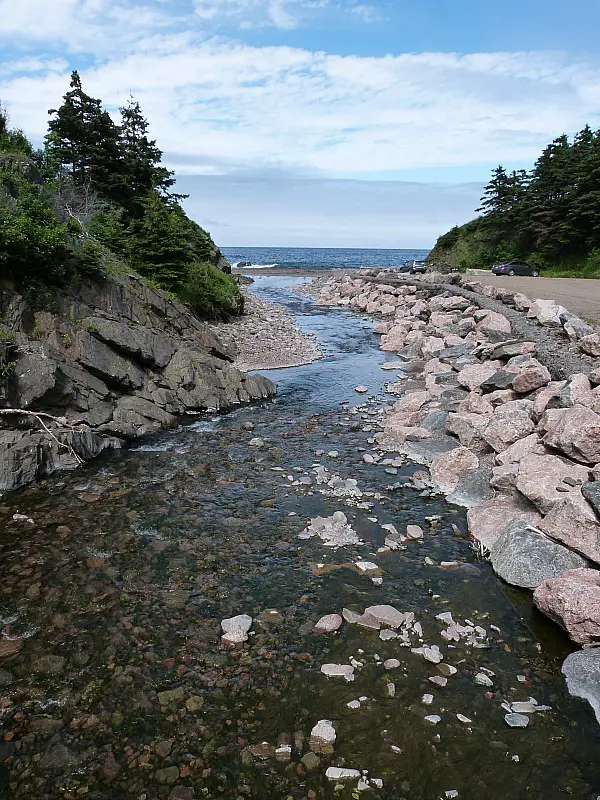
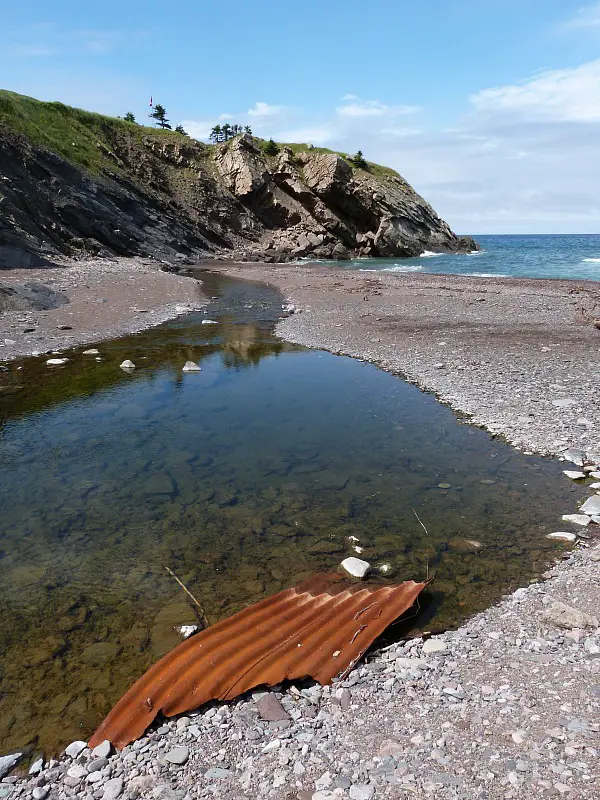
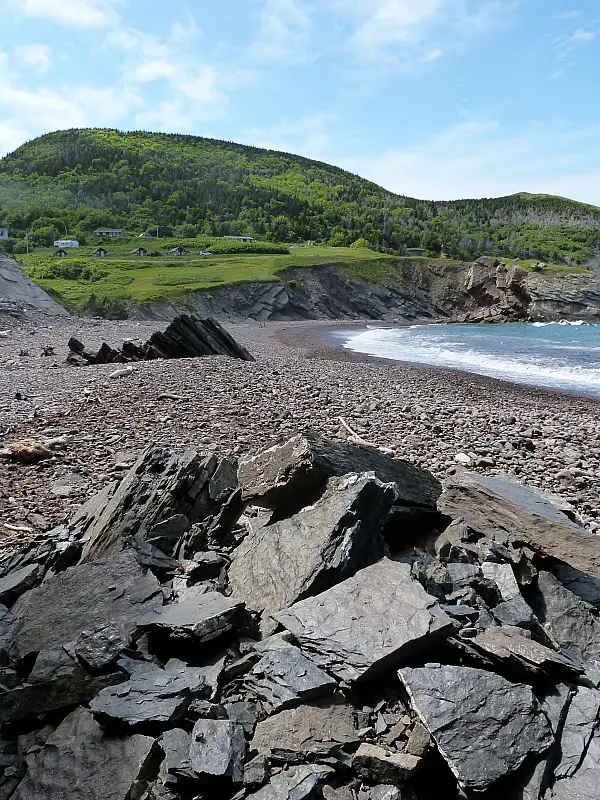
If we had more time and money we would have stayed a few nights in one of the cute cottages overlooking the beach. Instead we camped on the east side of the National Park near Ingonish beach, passing more beautiful coastline on the way.
It was really windy that evening and the loud crashing of the waves kept me awake for a while.

Visiting the Fortress of Louisbourg
Our last day on Cape Breton we visited the Fortress of Louisbourg. Unfortunately we were about a week early for the tourist season so only about a third of the buildings were open and it was raining quite steadily all day.
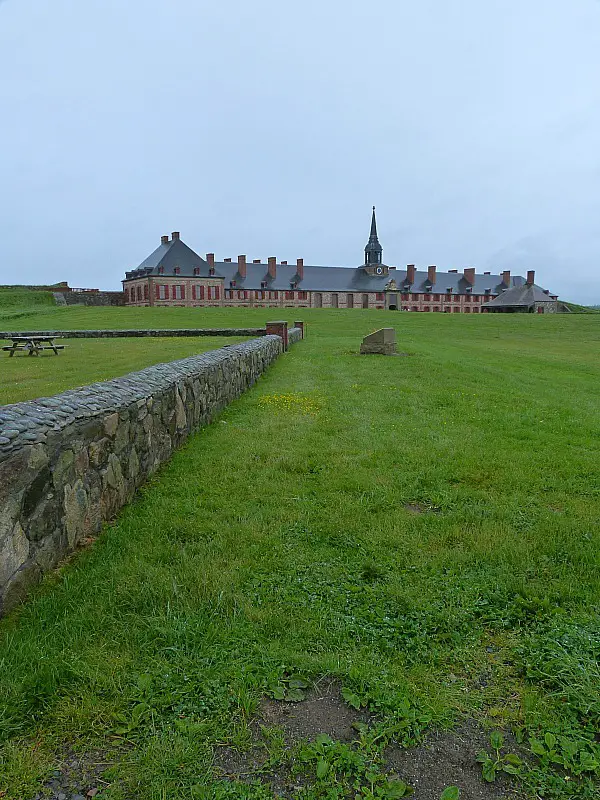
The Fortress is a partial reconstruction of the original French fortress and town that stood on the site between 1720 and 1758. In 1758 it was sieged by the British for the second time and destroyed.
It is incredibly well done and with the period costumed employees wandering around you do feel as you have stepped back in time.
There were even traditional gardens and small farmyards with sheep and geese. I think that as there weren’t many other tourists there that day it felt more authentic. The high attention to detail was very impressive.
We ate in a restaurant that is modeled on one that was originally in Louisbourg and serves food from that period. I had a lovely pea soup with hard bread and Trav went for the bread and cheese; a very meagre meal but reasonably tasty.

We went into all of the buildings that were open with the highlights being the Governors House, which was furnished as it would have been for the Governor in the 18th Century, and the Blacksmiths where the ‘Blacksmith’ was actually making swords as it would have been done originally.
I would like to go back when there are more buildings open and when it is sunny (too much to ask?) as there is a nice walk out to the coast past some of the ruins which was too soggy for us to do this time around.
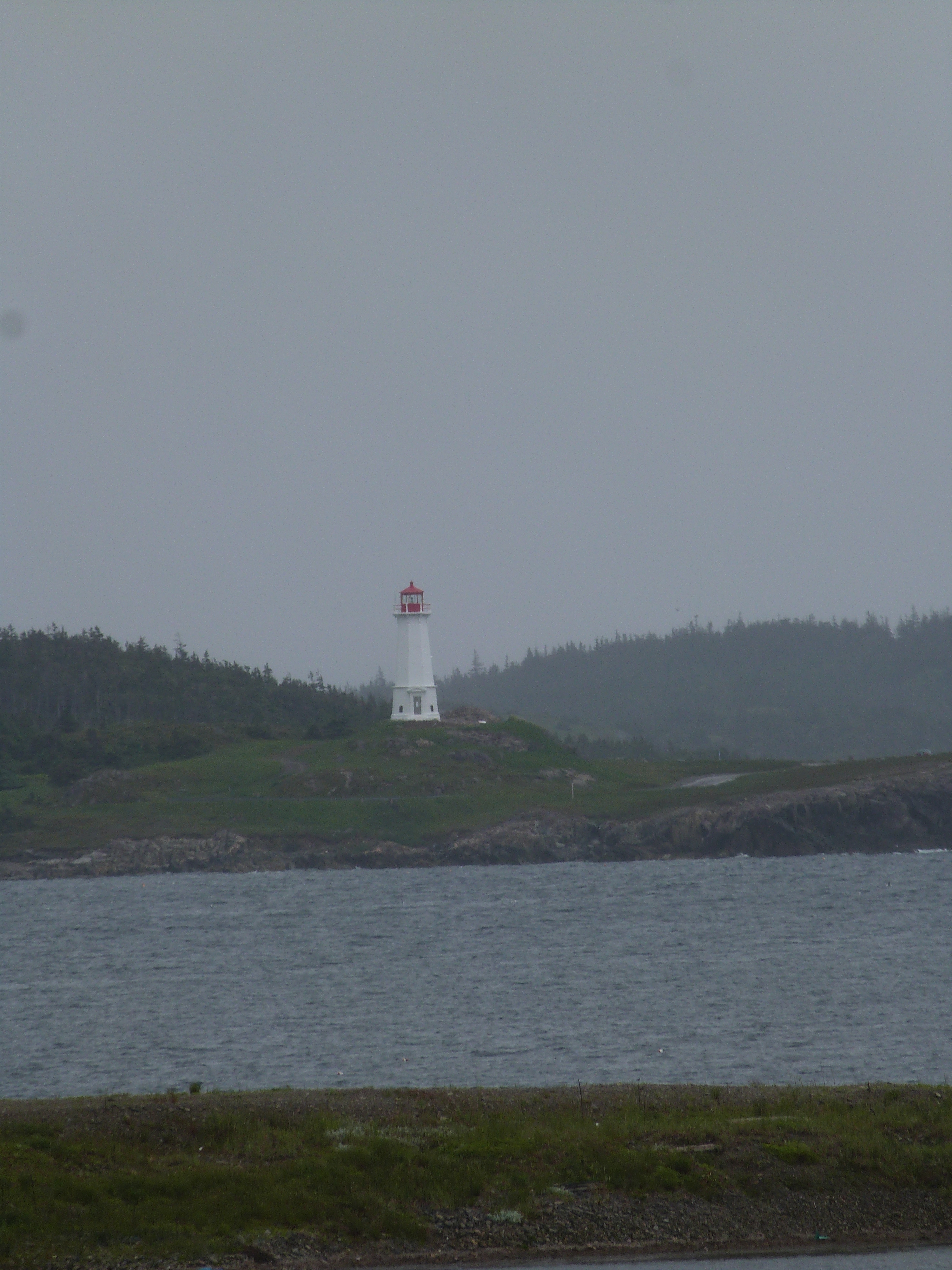
We got a bit lost trying to get back to the mainland from Cape Breton Island but eventually managed to find our way and set up camp in a wooded family camping ground near Pictou, about 1 ½ hours north of Halifax.
Our cheap tent managed to withhold the hard rain throughout the night without leaking but the chilly wind kept us awake for a while.
A Short Trip South of Halifax
We swapped rental cars back in Halifax the next morning before picking up our traveling guest, Sylvain from Montreal.
We had advertised on Kijiji (Canadian Craigslist/Gumtree) for anyone wanting to join us on our overnight trip to Lunenburg via Peggy’s Cove, Chester, and Mahone Bay, as we needed to keep our costs down.
The buses and tours for this part of Nova Scotia are extortionate, so by charging enough to cover our petrol plus a bit more, we were cutting costs dramatically for Sylvain and ourselves.
Sylvain has just started an indefinite trip around the world with the first three years being spent in the Americas. He is an Internet Programmer so can work on the road, a great profession for traveling.
After picking up Sylvain we headed to the small and picturesque fishing village of Peggy’s Cove which is famous for its lighthouse, one of the most photographed and visited in the World.
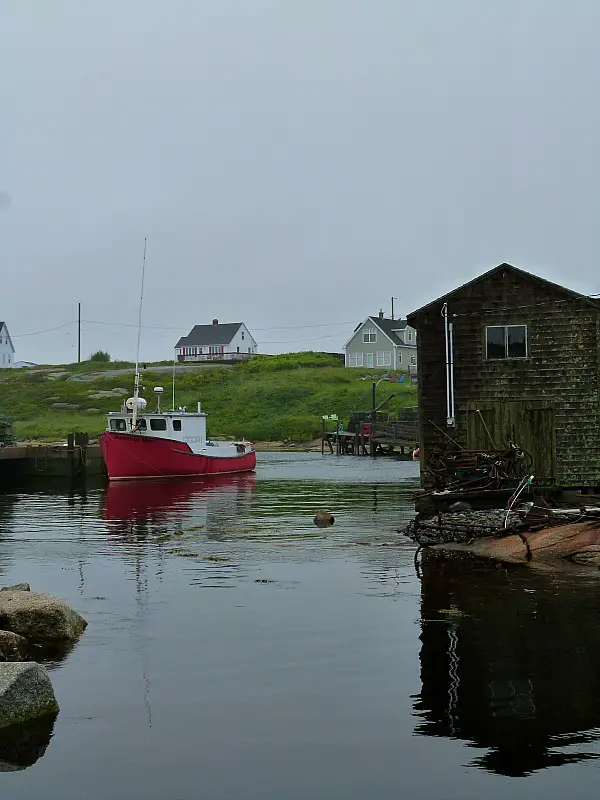

Despite the cold and misty day, there were indeed a lot of people visiting the lighthouse. Usually I would have been annoyed by the weather but the mist added something to the setting; a lonely lighthouse, sitting out on smooth, wave-worn rocks with the sea crashing around it.
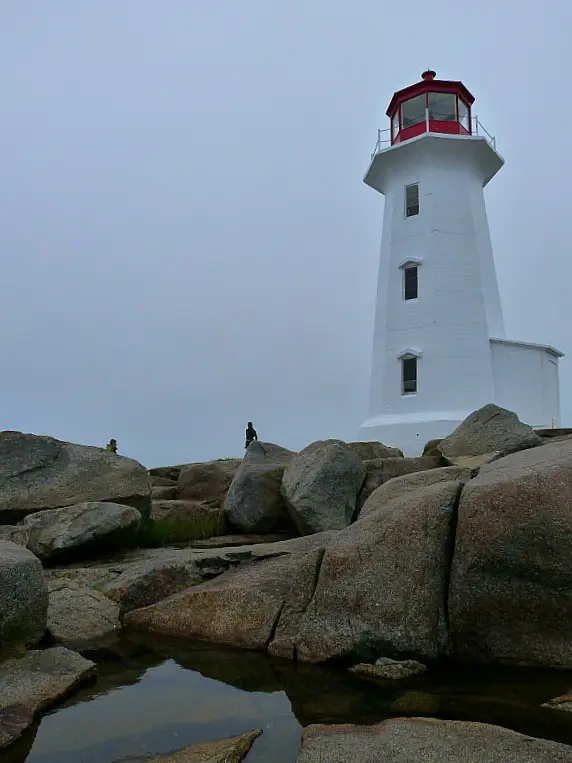
We took lots of photos from different angles and then walked around the small harbor. The wharves were strangely deserted other than a couple of fellow tourists, lots of lobster pots piled on the rickety wharf and old lobster boats in the harbor.
The lobstermen had already been out for the day and returned to harbor and it was only lunchtime.
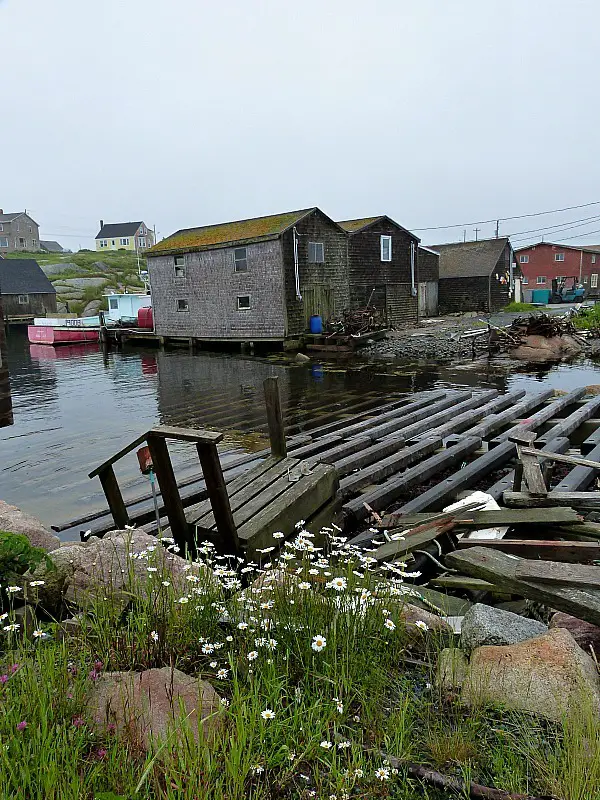

We drove around the mist-shrouded coastline, past small coves and harbors with little islands of rock and green.
The small fishing village of Chester comprised a small main street with quaint buildings and a walkable harbor but the main reason I wanted to visit was for the Kiwi Café, a restaurant owned and run by a New Zealand Chef that I had found out about accidentally a couple of years ago when googling a Kiwi café in London for brunch.
Sylvain and I had the Lobster and Smoked fish chowder and Trav had a fancy grilled cheese. The chowder was so rich and creamy with big hunks of fish and lobster; simply delicious.
Our next stop, Mahone Bay, is another fishing village with a colorful main street and beautiful harbor. We wandered around when there was a break in the omnipresent rain before heading to Lunenburg, our destination for the night.

Lunenburg is a UNESCO World Heritage Site for its unique architecture and civic design, being the best example of a planned British colonial settlement in North America (thanks Wikipedia).
There is a memorial to all of the local fishermen and boats lost at sea from 1890 to now down by the water. There were a lot of people lost every year until about 20 years ago. It was, and still is, a dangerous profession.
We had a delicious hot chocolate in a café overlooking the harbour to escape the rain then reluctantly made our way back to our campsite.
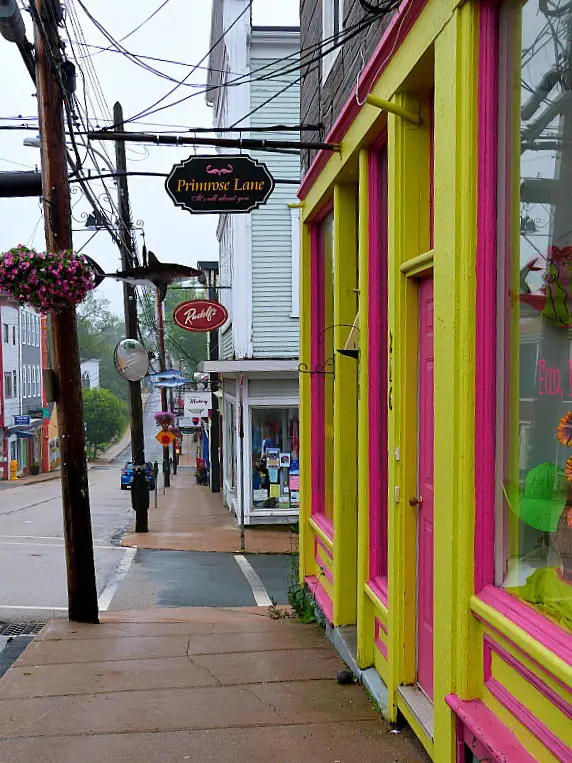
I really love camping – just not when it is cold and wet. We were very much looking forward to couch surfing again after a couple of wet nights.
After taking photos of the postcard view of Lunenburg from across the water the next morning, we picked up Sylvain and headed back to Halifax.
After dropping off Sylvain and then the car, we bussed out to the Airport to wait for our rideshare to Charlottetown.
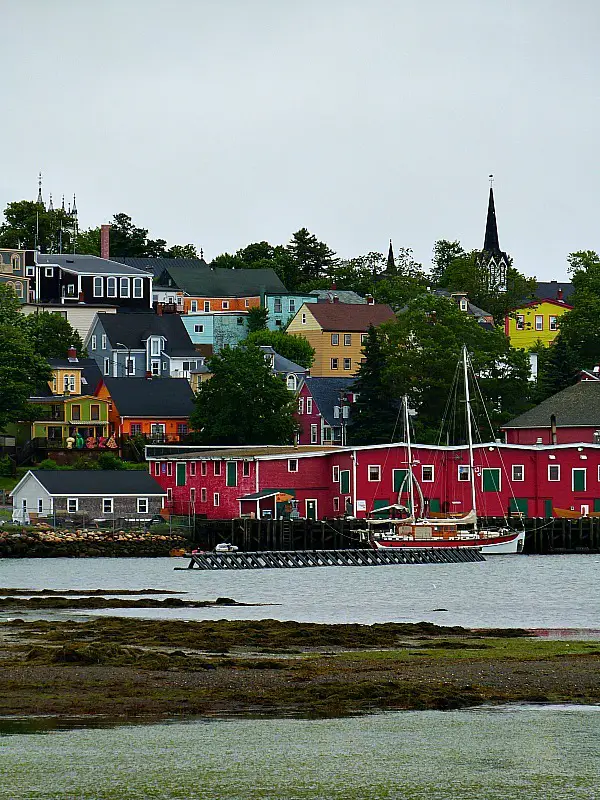
After one week in Nova Scotia, we were still on budget thanks to the rideshares, couch surfing, and cheap camping.
Although we weren’t blessed with much summer weather in Nova Scotia, we found the history fascinating, the people friendly and the landscapes remarkable. Nova Scotia is a great destination to explore!
If you liked this post, check out some of my other Canada content:
- How I Traveled Through Canada on $30 Per Day
- The Best Vancouver Itinerary: 4 Days in Summer
- Crypt Lake Hike: One of the Best Hikes in Canada
- Life in Field, BC: The Best Mountain Town in the Canadian Rockies
- What To Do in Revelstoke If You Only Have Two Days
- The Sunshine Coast, BC: Canada’s Most Underrated Destination?
- Revisiting Victoria: Canada’s English-Themed City
- What to do in Summer on Denman Island, Canada
- Hiking Through the Mountains to Stunning Garibaldi Lake
- Why You Should Visit Vancouver in the Fall

I’ve never really formed an image of Nova Scotiabank, or what it would feature nature and architectural wise. So thank you for clearing lots of things up for me. I feel that you’ve properly introduced me to this area. It looks beautiful!
Scotia* haha my phone obviously us into banks for some reason
Haha don’t you love auto correct! Nova Scotia is a beautiful part of the world – very rugged and unspoilt
Beautiful pix and post. I traveled Nova Scotia last year and blogged about the Cabot Trail, Louisbourg and tidal bore rafting. I think every Canadian oughta see the Cabot Trail. Magnificent.
I agree! I am so happy I got to see it
Fantastic post! It’s really informative and insightful. It really gives the reader a taste for the region. Plus, I love the Maritimes! Atlantic Canada has a lot of personality, natural beauty, and heartfelt traditions. You captured it well 🙂
Thanks so much Kate! I really enjoyed my too short time there and will definitely be back to experience more in the region in the future 🙂